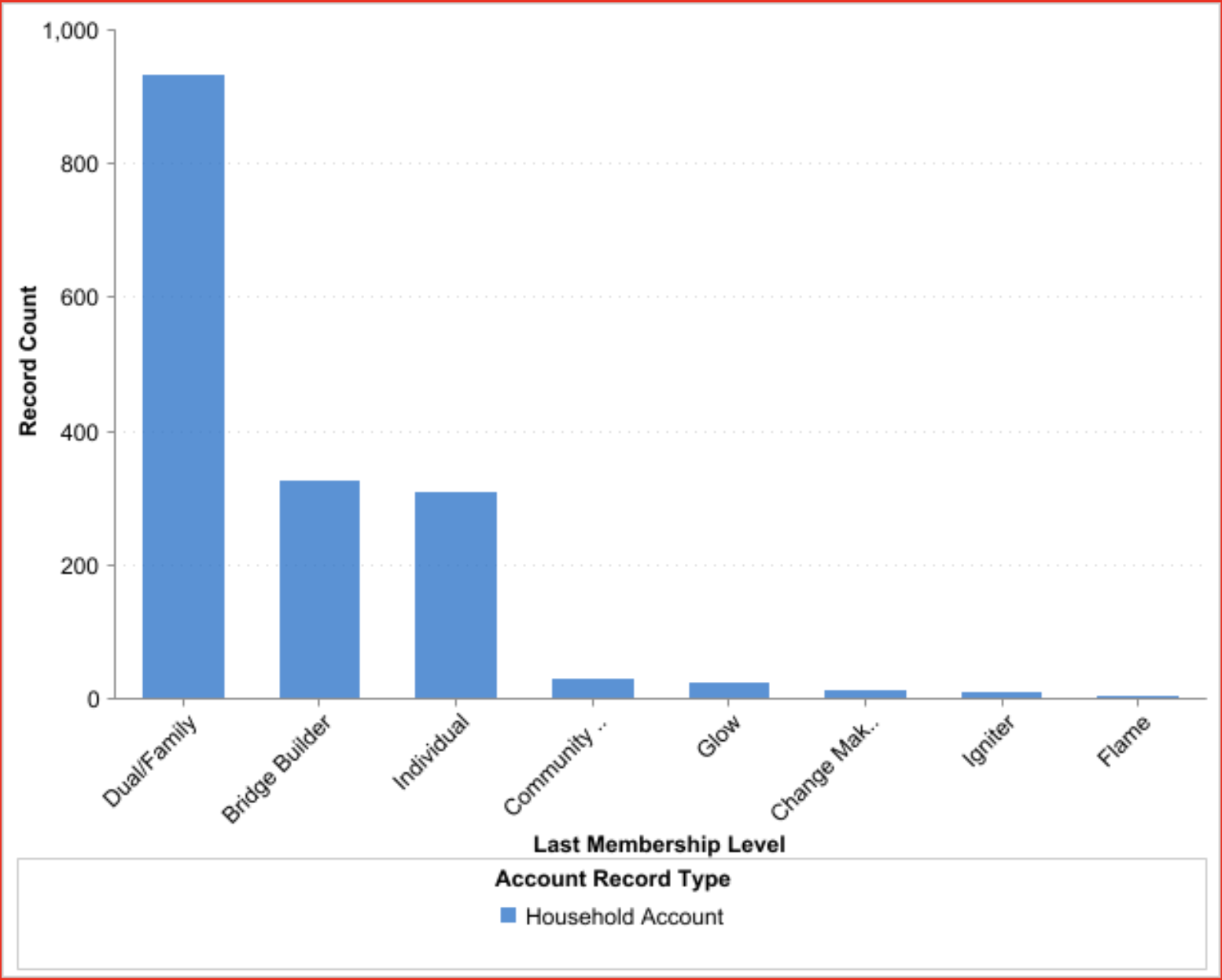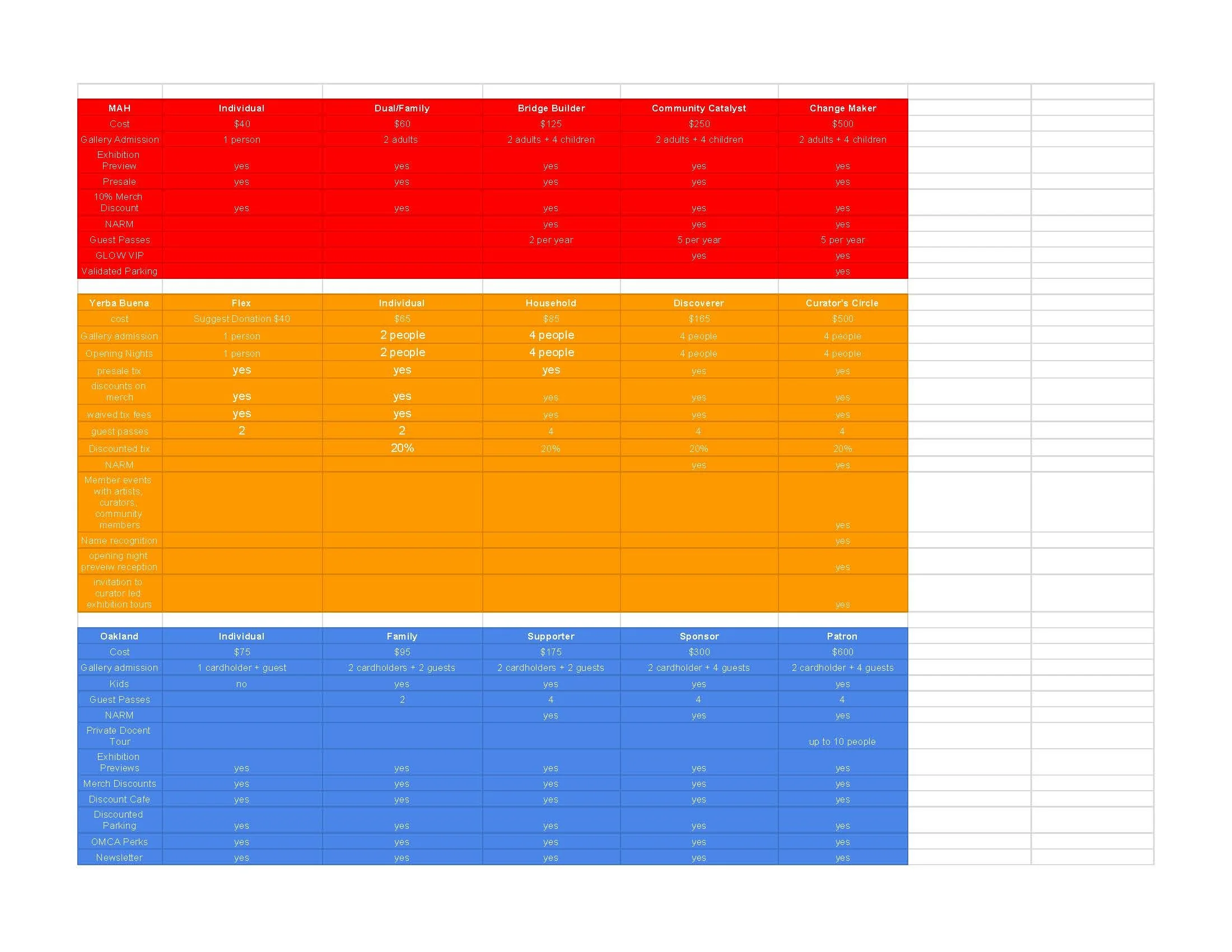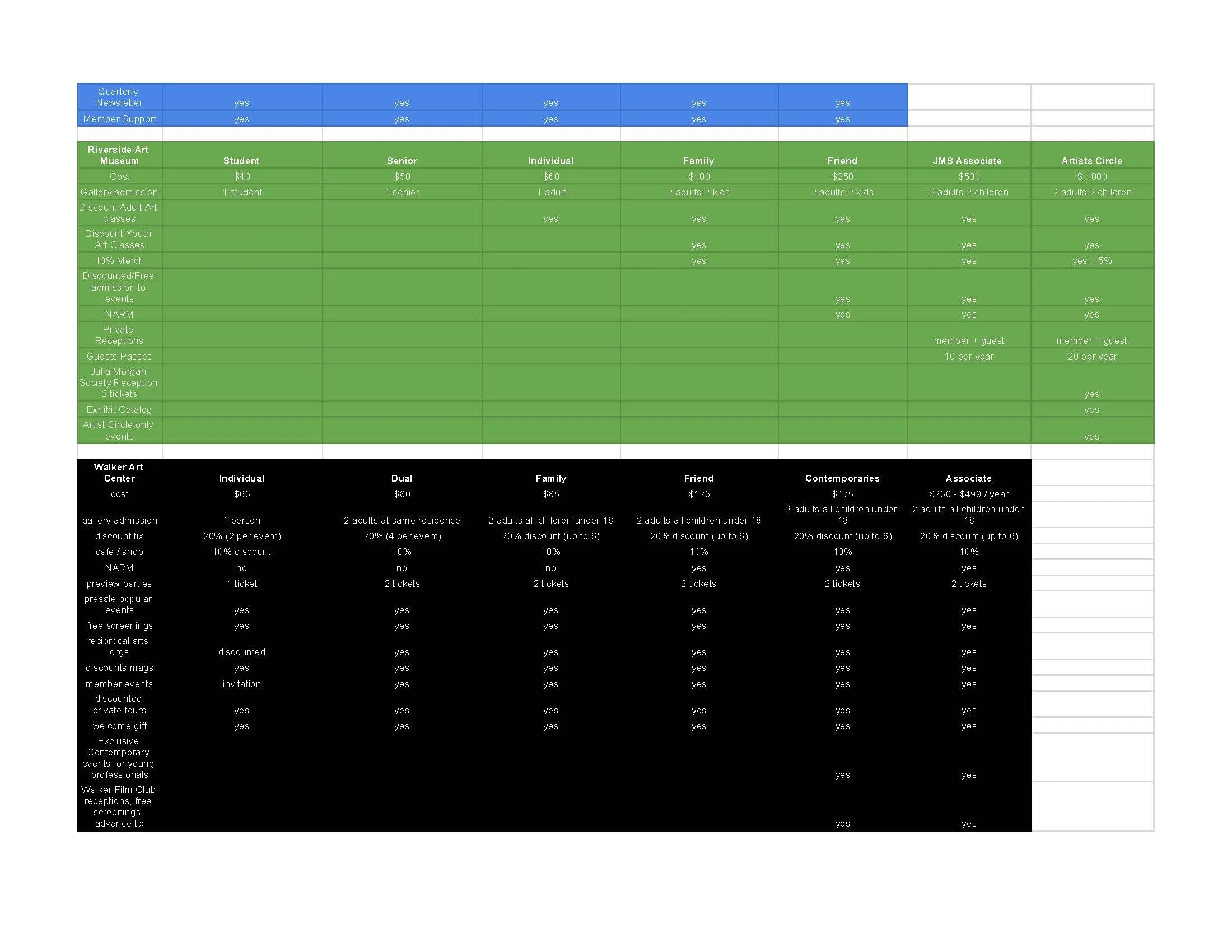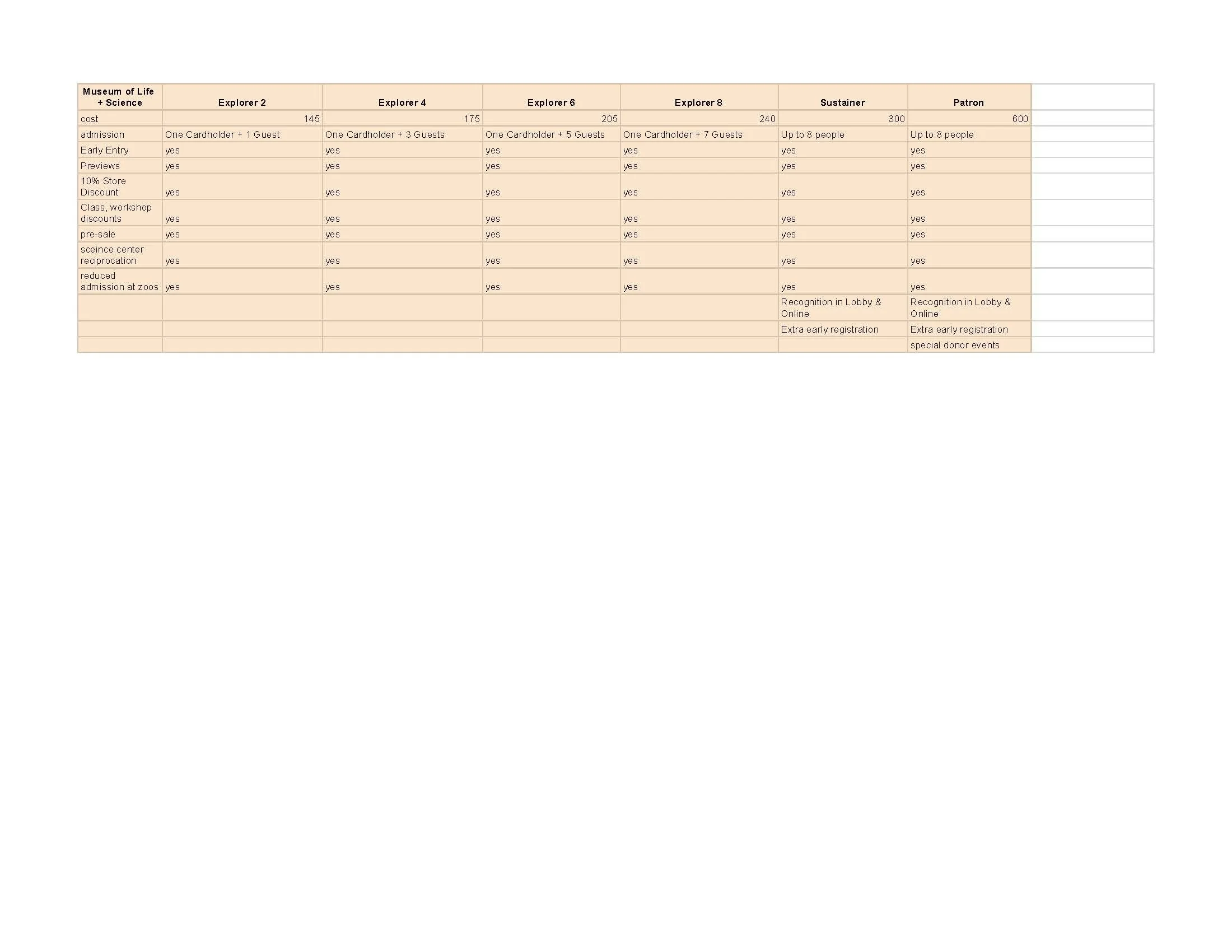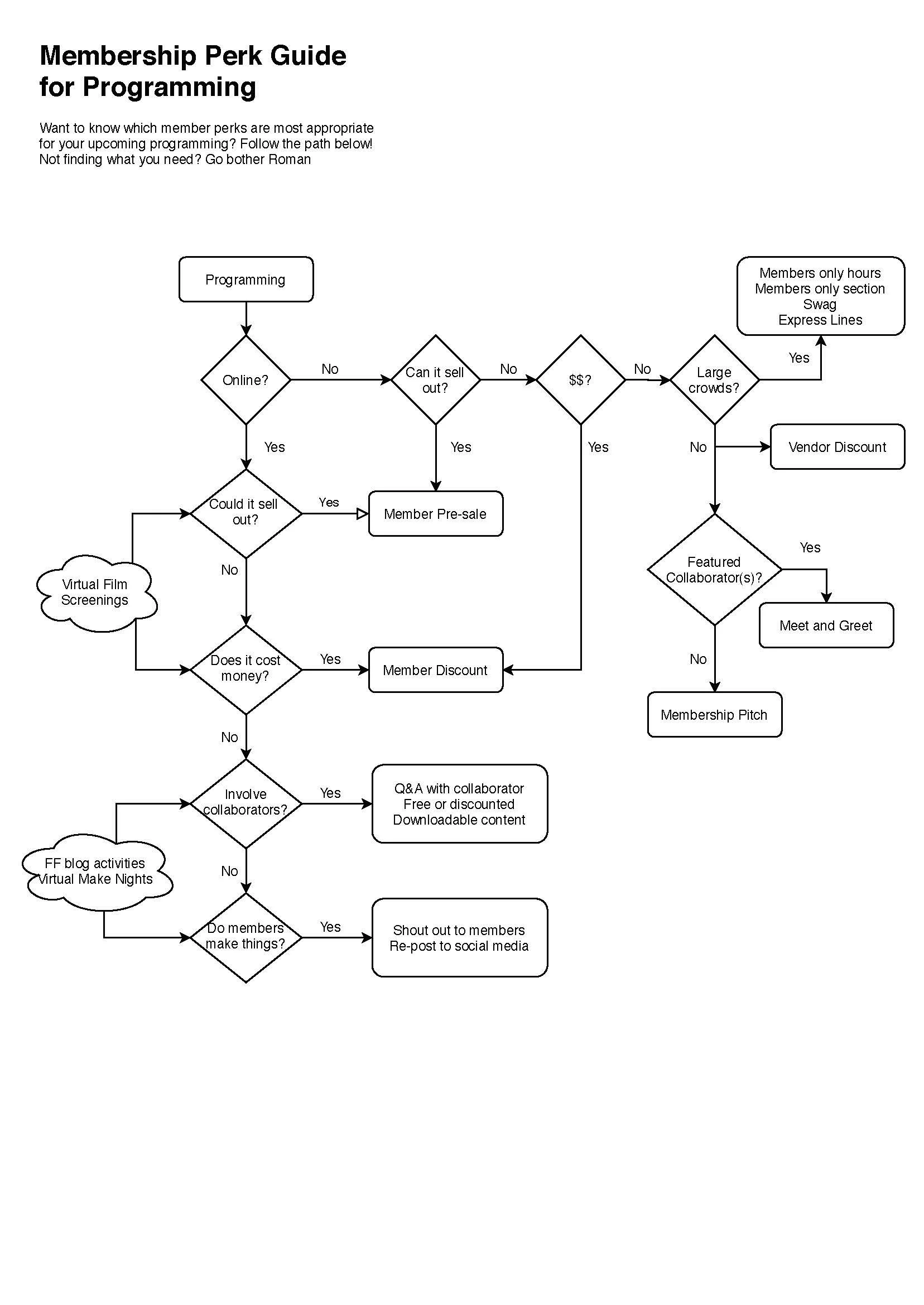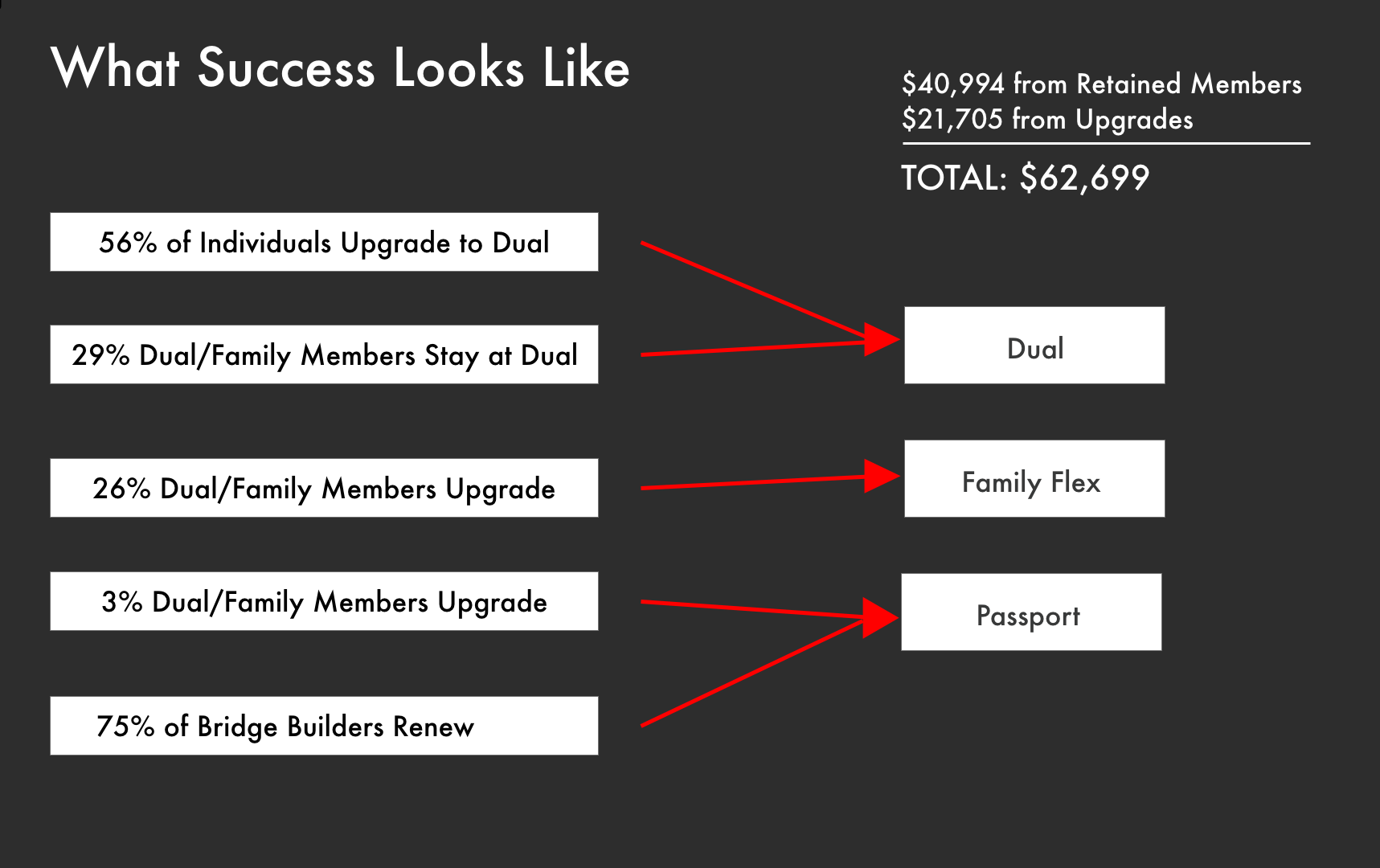
Santa Cruz Museum of Art & History Membership Program
Research & StrategyThe MAH’s mission is “To ignite shared experiences and unexpected connections.” It is a community hub intently focused on being relevant to the community that surrounds it and supports it. I applied design thinking to solve one of their most consistent issues: membership retention. The proposal was accepted by the Director of Development, Executive Director, and the board of directors.
I joined the MAH’s Development team in Fall 2019 to oversee the Membership, Volunteer, and Internship programs. During the course of this project, the MAH also hired a new Director of Development as well as a new Executive Director. I presented this proposal in May 2020, in the aftermath of the Covid-19 shelter-in-place order.
The Challenge
Build a world-class membership program that produces engagement and revenue while furthering the MAH’s mission of building a stronger, better connected community. An added challenge was the uncertainty around Covid-19 and the length of the shelter-in-place order that followed. While this proposal was being developed, there was no clear date for reopening. The museum is now planning on reopening in Spring of 2021.
The MAH’s membership retention rate was 15% lower than the industry average. The benefits of being a member of the museum were unclear, as were the distinctions between levels of membership. Internally, the current membership structure made it difficult to segment and target audiences. Add a global pandemic with record high unemployment rates and a shelter-in-place order, and we had ourselves a puzzle.
I designed a 3-tiered membership program with tangible, recurring benefits that reflect member values, increase retention rates, and provide more accurate revenue forecasting.
What I Did
As Partnerships Catalyst at the Museum of Art & History, I spearheaded a revitalization of the membership program, balancing data-driven insights with community-centered engagement. My contributions included:
Analyzed Market and Member Data
Conducted 250+ surveys, 15 interviews, and comparative research to identify what local audiences valued most in museum membership, uncovering opportunities to grow participation and loyalty.Redesigned Membership Strategy
Proposed a tiered benefits structure that better aligned with visitor motivations, from casual attendees to deeply engaged cultural supporters.Built and Activated Community Partnerships
Collaborated with local businesses to create reciprocal benefits and new member perks, extending the value of membership beyond museum walls.Scaled Volunteer & Intern Involvement
Recruited, trained, and onboarded over 200 interns and volunteers—expanding capacity, growing participation by 125%, and adding more than 600 volunteer hours annually to support member programming.Launched Engagement Programming
Co-created and supported signature events (e.g., First Fridays: Artwork) that showcased member value, strengthened community ties, and positioned the MAH as a hub of cultural life.Delivered a Data-Backed Proposal for Growth
Presented a comprehensive restructuring plan to leadership, synthesizing qualitative feedback, quantitative analysis, and market benchmarking into a clear, actionable roadmap.
Outcome
The membership program revitalization positioned the Museum of Art & History as both a cultural anchor and a community connector. By pairing research-driven strategy with grassroots engagement, the initiative delivered measurable growth and long-term sustainability.
Expanded Membership Value – Redesigned benefits and local business partnerships provided members with richer, more tangible reasons to join and renew.
Strengthened Community Ties – Signature programs like First Fridays: Artwork attracted new audiences and reinforced the museum as a gathering place for art, culture, and dialogue.
Scaled Organizational Capacity – Recruitment and training of interns and volunteers boosted participation by 125% and added 600+ hours of annual support for programming and member services.
Informed Strategic Direction – The data-backed proposal gave leadership a clear roadmap to expand membership revenue while deepening engagement with diverse stakeholders.
Increased Institutional Visibility – By reframing membership as a community experience rather than a transactional offering, the museum enhanced its reputation as an inclusive, forward-thinking institution.
Data Analysis: A Story in Numbers
During my first few months at the MAH, I poured over their database trying to grasp an understanding of the MAH’s membership population. I sought to understand key demographic information as well as value-driven information, such as their reason for becoming a member.
The MAH had approximately 2,000 members. Out of the 8 membership levels, over 95% belonged to the 3 least expensive levels.
Members are pre-dominately White and female, although there is a significant segment of Latinx househoulds.
Members are mostly in a ~25 mile radius of the museum.
The MAH sells nearly 800 memberships each year, but only retains 55% of memberships annually.
Before I dug into the MAH’s data, I spent time reading the work of Colleen Dilenschnieder, the author Know Your Own Bone - a data resource for cultural institutions. This data was a continual reference point to gauge the MAH’s membership program against industry standards.
Competitive Analysis
No organization exists within a vacuum, especially not a cultural institution. I compared the MAH’s membership program to similar programs at 7 other cultural attractions, including nearby museums. Key factors were: number of membership levels, price, admission policy, as well as additional benefits.
Key Takeaways:
MAH has more membership levels than average
Most museums have a distinct level for familes
Most museums include guest passes
Most museums provide early access to exhibitions for at least some members
User Interviews
I was simultaneously shocked, horrified, and grateful for this jarring statement by one of the MAH’s front desk staff. Given that almost 90% of membership sales happened at the front desk, I expected a swift and solid list of reasons to become a MAH member. The more I looked into the problem, the more I understood what they meant. This was a big lesson in putting aside all assumptions when investigating a problem.
Method: User interviews were not done in a formal fashion. I asked members questions while attending member events, walking through the gallery, or speaking with them over the phone.
The most common questions I asked were:
What is your reason for being a MAH member?
What are your favorite benefits of being a MAH member?
What benefits would you like to receive that you are not currently receiving?
Major Takeaways:
People equate becoming a MAH member with supporting the MAH as an organization
Free admission to the galleries is a driver of membership, especially for parents with young children
Members are not necessarily aware of the perks of membership, how these perks vary by level, or even the length of membership
There are both tangible and intangible motivations for becoming a MAH member
“I don’t know why anyone would become a MAH member.”
“I want to feel special. I want to remember why I became a member with each visit.”
“I see membership as a way to support the museum and support the Arts in general. ”
“I like being able to come to the exhibitions whenever I want with my kids. It’s nice to have a place we can come to over and over again.”
Surveys (Online and Phone)
While this insights form brief conversations are helpful, I wanted to validate these sentiments en masse. I used SurveyMonkey to conduct online surveys, sent directly to members in the weekly newsletter as well as in direct email blasts. Later, after the shelter-in-place order, I coordinated a phone surveying effort with the help of several staff members.
I wanted to investigate why people become members in the first place. I also wanted to validate/invalidate some ongoing assumptions of museum membership. How much members actually value perks like discounted tickets and Members-only events? Does anyone care about a 10% gift store discount?
Number of Completed Surveys: 230
Online: 120
Phone: 110
Method: Online, Multiple Choice, Open Response
Meeting Intangible with Tangible
If the two primary factors for buying a membership are to support the MAH/the Arts and receive free gallery admission, why not double down? Why not make it as simple as possible?
Here are a few questions that came up:
How will this affect admission costs? The MAH’s admission was generating about $60,000 of revenue each year, which is to say, an insignificant amount that could easily be made up with a grant. We know from large funders that one of the main factors for giving grants is how many people are served by the organization. With guest passes, we expect the number of total visitors to actually increase.
Does this help us target our audience more? YES. By dividing the Dual/Family level into Dual and Family Flex, we are separating members that have children from those that don’t. We can now send targeted email campaigns to Family Flex members about youth-friendly events, without a childless couple wondering, “why am I receiving this email?”
Why are you taking away the two highest cost levels of membership? Research shows that people at this level are primarily concerned with donating to the museum, not for the perks. In fact, the only additional perks for these levels were validated parking (almost never used) and a VIP experience at an annual event (which was being re-evaluated). By creating a range of $150 - $500 for the Passport level, it encourages people to choose a donation that’s right for them. In the online checkout process, there will still be an option to give $250 and $500.
Why are you getting rid of the individual? The MAH’s mission is to ignite shared experiences and unexpected connections. You don’t do that by attending a museum by yourself. The museum is intended to be a gathering place, a shared space. So why not give individuals an opportunity to bring a guest with them, for free? If they do this twice within one membership year, they have already paid for the price difference. Data analysis also showed that the individual membership level wasn’t generating significant revenue at the museum (<$10,000/yr).
What about the levels of membership over $500? I’m so glad you asked….
Problem Statement
Members need a way to feel a sense of belonging, ownership, and access to the museum as well as a way to see the outcome of their membership contribution. We will know this to be true when membership retention levels increase.
Hypothesis Statement
By creating tangible, recurring benefits with clear distinctions between membership levels, we can better communicate the perks of being a member, reflect the community’s values, and increase retention.
The decision to focus on tangible benefits was intentional. Based on data from Know Your Own Bone, members of cultural museums already view membership as supporting a cause. By focusing on tangibl benefits, we were more likely to retain members who “didn’t feel like it was worth it” to renew their membership.
Separating Donations from Membership
About 10 years ago, the MAH had a relatively small group of donors of $500. It was easy to keep track of them, even before the MAH incorporated Salesforce. The MAH tossed them a membership and said “Hey, thanks for donating.” But as an organization grows and it’s funding becomes more complex, that strategy breaks down. It’s more difficult to keep track and suddenly - a donor who gives $2,500 a year is being told by the Front Desk staff that they are sorry, but their membership has expired (even though they donated 2 months ago).
It was confusing for new staff members and, worse, it was aggravating for donors. We would reach out to them several times a year during fundraising campaigns (Annual Appeal, Spring Campaign, etc.) and then we would also reach out to them to renew a $1,000 or $2,500 or sometimes a $5,000 membership. It was a disaster (and embarrassing). These were clearly donations not purchases, so why treat them like a purchase?
This comes with a lot of benefits. Gone are the days of asking poor Judy to renew her membership. Gone are the days of wondering if that $5,000 “member” is going to renew so we can reach our membership revenue goal for the quarter. Based on the number of members in this category, we estimated that we would secure $8,750 annually in auto-renewed membership payments
Most importantly, it makes donors feel like we are taking their donations seriously. That we, as an organization, know how to run things and are trustworthy with their investment. When you donate large sums of money to an organization, it’s personal. It should be treated personally. The donor should be treated personally. That’s exactly what this strategy does.
Back to the Perks, Please
So, let’s do a quick recap: We already brought the 8 levels of membership down to 3 levels. We separated out donors from members and created an ongoing payment plan to increase revenue forecasting. But what about creating tangible member benefits for members? After all, 95% of the MAH’s members were in the lowest 3 levels anyway.
The very first thing we did was address the most valued perk of being a member: free admission. We added guest passes to each level of membership, adding a sense of ownership. Members can bring guests to the their museum. Then we added some more.
As you probably noticed, there were a lot of people involved in creating these perks. Here are some highlights:
I negotiated with the Exhibitions team to change the exhibitions schedule. Previously, new exhibits would open on First Friday - a day without any admission where anyone and everyone could come see the event. Members were invited to a Sneak Preview event the night before. This didn’t feel like enough time for members. So we pushed the openings back two weeks (it’s like moving a mountain) so that members could preview the exhibitions without the crowds for two weeks before it was open to the public for free.
I created a program called Downtown Discounts that forged new partnerships with businesses in the downtown area. I secured discounts for members at 5 locations, all within walking distance of the museum. Each of these vendors added to “the museum experience" by incentivizing members to grab a drink, pick up a gift, etc. Things they might have planned on doing anyway, they now receive a small discount.
Abbott Square Discounts: Similarly, I navigated a particularly sticky situation between the museum and the food court vendors immediately adjacent to the museum. I acquired discounts for members at all 7 of these vendors.
Success Metrics
These estimates gave us an idea of what would could expect during a time of seemingly total uncertainty. It also revealed to us the unknown factors that we were dealing with. Despite everything, we set a goal of generated $62,699 from our current members from renewing their membership at the same level or upgrading to a higher one.
We determined new Membership goals informed by data from previous years, combined this with our estimates for renewals and upgrades, and then added the membership revenue derived from creating auto-renewed membership from large donors. This gave us a success benchmark to evaluate our efforts once the program was implemented.
Conclusion
I feel very lucky to have worked on this project, at this museum, and with this team. I learned so much about breaking the mold and keeping things relevant to the people you serve. Before taking this role, I had some hesitations that it would delay my pursuits as a UX Designer. As it turned out, it was the ultimate kickstart /crash course/ trial by fire in developing empathetic user journeys, making data-informed decisions, and aligning the user needs with business goals. It confirmed my belief that User Experience Design and design thinking is not contained in pixels, but in the lived realities of people’s lives, communities, and hearts.
I presented this restructuring proposal to the MAH’s leadership in June 2020. The proposal was accepted and the MAH plans on implementing these changes as part of their reopening.
Challenges and Obstacles
This was a monster of a project. The main challenge was to increase membership retention, but before even getting to that challenge I had to work around institutional issues such as memberships and donations being combined, an overwhelming number of membership levels, and staff turnover. Then, when those had been hurdled, the global pandemic launched everyone into the sphere of the unknown. Despite all of these obstacles, creating a problem statement and having a methodological process carried me through until I could present a pathway forward to the Director of Development, Executive Director, staff, and board of directors.
This project also exemplifies the power of collaboration, negotiation, and partnership. There would have been no way to give members two weeks advanced access to the galleries if it hadn’t been for the flexibility and openness of the Exhibitions team to change their schedule. We couldn’t have given members a discount at downtown business or at neighboring restaurants without compelling storytelling that convinced the owners that it was in their best interest to do so, as well as their openness to opportunity.
A significant obstacle to this project was the lack of access and control with the MAH’s website. Due to contracts and budgetary constraints, we were unable to investigate, evaluate, and reiterate the customer experience of buying a membership online.
The Learning Never Stops
Looking back on this project, I would like to spend more time working with the user experience and task flows of buying a membership online. I think it would be valuable to investigate WHY nearly 95% of memberships are purchased at the front desk as opposed to online. Is this a preference of museum goers or is there something about the online experience that pushes people away. Budgetary constraints prevented this from being in the scope of this project, but is something that should be investigated in the future.



